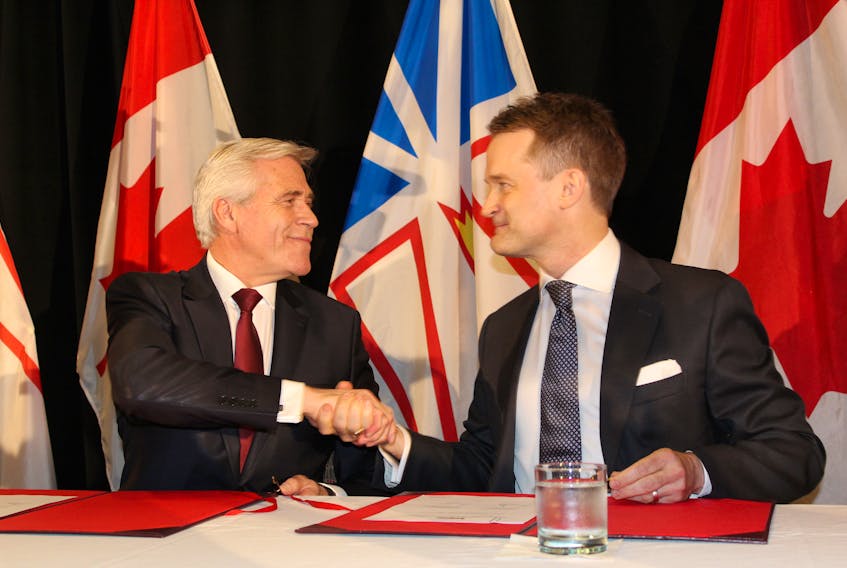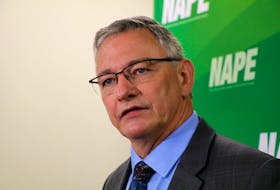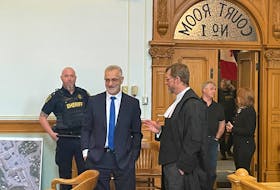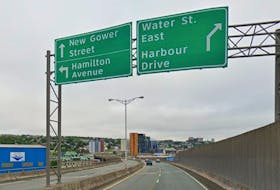ST. JOHN'S, N.L. — Newfoundland and Labrador will receive $2.5 billion in cash over 38 years from the federal government from the updated Atlantic Accord agreement.
“We got it right,” Premier Dwight Ball told a room of supporters at the Sheraton Hotel Newfoundland in St. John’s.
In total, the province will receive $3.3 billion between today and 2056. The $3.3 billion comes from the redistribution of cash going to the federal government from the Hibernia project. Federal cabinet minister Seamus O’Regan called the arrangement the “Hibernia dividend,” to provide a revenue stream to the province from the oil platform.
Instead of going straight to Ottawa, the federal share of revenue will go to the province with no strings attached.
The province will have to make eight annual payments of $100 million as part of the agreement, set to begin in 2045. The annual payments will go to the federal government for its continued involvement in the operation of the Hibernia platform.
With the $800 million going to the federal government, the province will make $2.5 billion from the deal.
Government documents estimate a $100-million reduction in debt expenses over the life of the agreement.
The payments from the $2.5 billion will be “front loaded,” meaning $1.9 billion will come before 2030, with the rest coming afterward.
The agreement will have an immediate impact on the province’s net debt, reducing it by $2.5 billion over that time, according to the government. The province estimates a 16 per cent reduction in overall net debt for the province.
Those details don’t mean the money is totally going on the province’s “credit card.” The total public-sector debt of Newfoundland and Labrador is just over $21 billion, with the net debt at $14.7 billion. The government will have discretion on how the money is spent.
“We will continue to be prudent. We will continue to make responsible decisions when we get into the budget. There is no restriction,” said Ball.
“The federal government didn’t come to us and say you have to spend it like in 2005 and have to spend it on debt relief. We have full control over this guaranteed revenue stream.”
O’Regan, who signed the document on behalf of the federal government, took issue with the notion the $2.5 billion over 38 years is a bailout for the province.
“The Atlantic Accord binds the Government of Canada and the Government of Newfoundland and Labrador to make sure the province is the principal beneficiary of its offshore. This is not bailout money. This is ensuring that is the case, that this province is the principal beneficiary,” said O’Regan.
The agreement is not retroactive, according to government officials. There was no year-by-year analysis to determine whether the $2.5 billion figure is exactly what Newfoundland and Labrador is owed in oil royalties.
The deal is predicated on extending the life of the Hibernia oilfield. As it stands, the platform is expected to be decommissioned in 2046 or 2047. Should Hibernia be decommissioned before 2056, there will be no impact on the agreement.
Ball says this province had the option to take over the federal government’s share of Hibernia outright, but elected to take the revenue.
“We had an option to take the shares, which would have meant we probably could have relocated the office. We would rather locate the bank account,” said Ball.
On rate mitigation, there’s nothing specific in the agreement, other than a commitment from the federal government to examine the issue.
“Canada will engage with Newfoundland and Labrador to expeditiously examine the financial structure of the Lower Churchill projects, so that the province can achieve rate mitigation,” read documents provided to media in advance of the announcement.
The rate mitigation study will begin on Friday, April 5, with a goal to have the study complete by the time Muskrat Falls is fully online.
Another point of the agreement is joint management of the province’s offshore. The federal government and province will maintain joint responsibility of the offshore oil and gas industry, but with a few changes.
Oil and gas activity will be allowed in the Northeast Newfoundland Slope Marine Refuge – an approximately 46,000-square-kilometre marine refuge near the 200-mile limit off the province’s coast. There will be a restriction on oil and gas activities in the proposed Laurentian Channel Marine Protected Area, near the province’s west coast.
The new agreement will also see an arbitration process used to settle any disputes between the federal government and province.
The money seen from the new Atlantic Accord agreement will be reflected in the 2019 provincial budget.
Twitter: DavidMaherNL
Twitter: juanitamercer_









